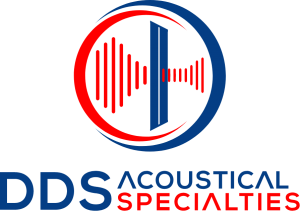Acoustic Louvers
Seeking optimum noise control and ventilation, architects and engineers turn to acoustic louvers. These specialized architectural features effectively mitigate noise transmission while allowing proper airflow.
Acoustic louvers are meticulously engineered structures that excel at reducing noise infiltration while facilitating airflow. With slats or blades arranged strategically, they redirect sound waves and absorb noise energy. By strategically placing louvers in areas prone to external noise sources like highways or industrial zones, they significantly minimize noise intrusion into buildings. These innovative louvers enable proper air circulation, ensuring a serene indoor environment.
Advantages of Acoustic Louvers
a. Noise Reduction: Louvers act as barriers, effectively reducing external noise levels and enhancing acoustic comfort for occupants.
b. Ventilation and Airflow: Unlike solid barriers, louvers maintain adequate airflow and ventilation in enclosed spaces, promoting a healthy and comfortable indoor environment.
c. Aesthetic Integration: With diverse designs and finishes, louvers seamlessly blend with the architectural aesthetics of buildings, enhancing their overall appeal.
Applications of Acoustic Louvers
Acoustic louvers find versatile applications across industries and environments, including:
a. Commercial Buildings: Offices, educational institutions, healthcare facilities, and retail spaces benefit from louvers, fostering productivity, concentration, and customer satisfaction.
b. Industrial Facilities: Manufacturing plants, power stations, and other industrial sites significantly reduce noise pollution by implementing louvers, creating a safer and more pleasant work environment.
c. Residential Structures: louvers installed in windows or on building facades in urban areas combat external noise intrusion, providing residents with peaceful living spaces.
d. In combination with other acoustic products: To get the most noise control possible, louvers are often time used as a piece of a system. They are combined with products such as HVAC Silencers, Barrier Walls, or Pipe and Duct Wraps.
Key Considerations for Implementation
a. Noise Analysis: Thorough noise analysis helps identify specific noise sources and levels, enabling effective acoustic louver system design.
b. Proper Sizing and Placement: Correctly sizing and positioning louvers ensures optimal noise reduction while maintaining efficient airflow. Consulting acoustic experts guarantees accurate sizing and placement based on noise levels and ventilation requirements.
c. Quality Materials and Construction: Utilizing premium materials and ensuring meticulous construction of louvers ensures long-term effectiveness and durability.
Acoustic louvers serve as exceptional solutions for noise control and ventilation in diverse environments. By expertly attenuating external noise and facilitating proper airflow, these architectural marvels enhance acoustic comfort and promote the well-being of occupants, making them invaluable additions to contemporary building designs.



